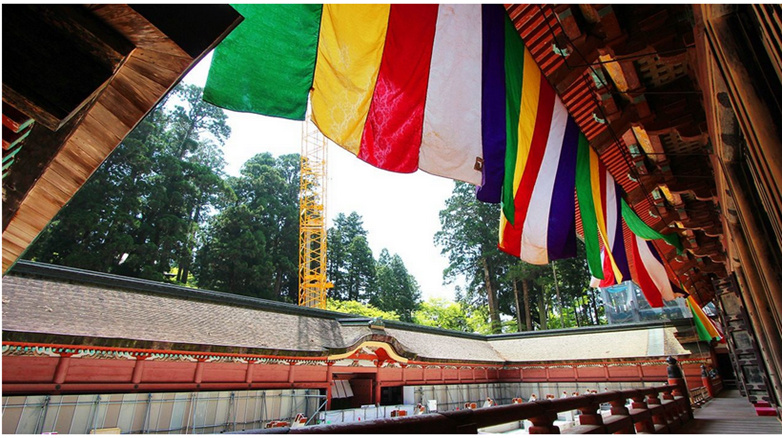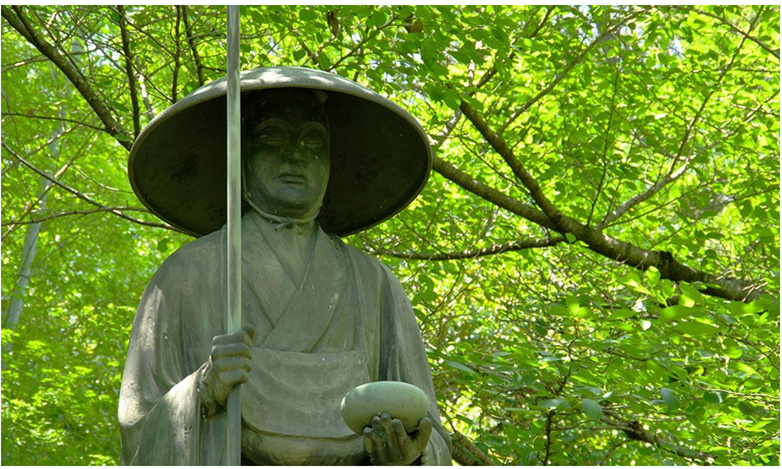The importance of the Tendai teachings in the development of Japanese Buddhism

In this part of the series, the author sheds light on the Tendai School, one of two esoteric sects that dominated Japanese Buddhism starting from the Heian period, as this school had a great influence on the subsequent developments of Buddhism in Japan.
Tendai School teachings and their changeability
From the 9th century AD two esoteric schools of Buddhism, Tendai and Shingon, played a dominant role in Japanese Buddhism and laid the foundations for almost all subsequent developments in the centuries that followed. From the broader perspective of Buddhist history across Asia, there was something a little paradoxical about the way the religion took hold in Japan. Esoteric Buddhism was more like an end than a beginning, as it represented the final evolutionary stage in the development of the Buddhist religion in India over the centuries. However, this esoteric version of the teachings of Buddhism was the first to become widely circulated in Japanese society as the 'true teachings of Buddha'.
Shingon Buddhism was a relatively 'pure' version of the esoteric faith and thus changed relatively little, continuing to adhere to its basic tenets throughout most of its subsequent history. The situation with the Tendai School was completely different. The Tendai teachings represent a complex system of thought compiled by taking different ideas from Buddhist philosophy and combining them into one crucible according to the distinctive logic of the Tendai school, then impregnating the new entity with esoteric Buddhist ideas. This means that Tendai and its teachings have a much greater ability to change and adapt to changing trends and changing social conditions. To understand the basic nature of Japanese Buddhism, we must start from a clear understanding of the influence of this school on Buddhism in subsequent periods.

The Tendai School, housed in its own temple complex on Mount Hiei outside the capital of Hyegokyo (now Kyoto), had an enormous and wide-ranging influence on the development of Japanese Buddhism in subsequent centuries. Below I address three aspects of this effect and examine some of the reasons why this effect is so important and long-lasting.
An ambiguous approach to the ordination of monks
As we learned in previous parts of this series, Japanese Buddhism in its early years lacked its own formal Sangha priesthood community. But the rituals and rules regarding the ordination of monks were clearly defined. This ceremony was conducted in accordance with the Vinaya Pitaka, the behavioral rules for Buddhist monks brought to Japan by the Chinese monk Jianzhen (688-763). The same monk ordination ceremony is still followed in Buddhist countries around the world today. This ceremony is called “Upasampada” in Sanskrit, translated into Chinese as 受戒 (Shoji) and pronounced in Japanese as “Jukai”.
Since Buddhist monks under the Nara period of Buddhism worked for the state and were government officials of sorts, it would have been unreasonable to allow an independent Sangha community to govern itself by means of Vinaya Pitaka statues. An exception is made for the Upasampada ceremony, which was incorporated into Japanese Buddhism and served as a means of distinguishing between ordained monks and laymen. The Upasampada ceremony in Japan was a type of formal disqualification by which monks were recognized as government officials.
Similar to other exams taken when applying for government positions, it was important to limit the number of people who could pass. The government duly placed restrictions on the number of people who could be allowed to undergo the Upasampada ceremony to officially become Buddhist monks.

For the Tendai school, which emerged as a new force in Japanese Buddhism in the years following the transfer of the capital from Nara to Kyoto and whose headquarters were on Mount Hiei outside the new capital, restrictions on the numbers of monks were a source of discontent. One factor that made it particularly annoying to her was that these rules served as a convenient way for the six southern schools of Nara Buddhism to protect their own interests.
To overcome this obstacle, the Tendai School created new standards of its own, stating that a person could become a priest without having to go through the Upasampada ceremony. As the Tendai sect grew in power and influence, this approach became prevalent in almost all schools of Japanese Buddhism, including eventually among its rivals, the Shingon sect. In Japan, where Upasampada ceremonies were closely linked to state power and sovereignty, getting rid of these restrictions was an essential part of ensuring freedom of religious activities.
But from another point of view, the abolition of the Upasampada ceremony means that anyone can now declare himself a priest in the manner he sees fit. Therefore the clear distinction between Buddhist monks and secular laymen was lost.
Even today various schools of Japanese Buddhism use special ordination ceremonies for monks, and hardly any school uses Upasampada ceremonies based on Vinaya Pitaka rules. From the perspective of other Buddhist countries, the situation in Japan - where Buddhist clergy are not formally ordained by going through the Upasampada ceremony - seems very strange indeed. This historical background is one of the factors that makes Japanese Buddhism so different from Buddhism in other countries.

The logic of absolute confirmation
The Tendai School sought to integrate all of the countless teachings that had emerged over the long history of Buddhism since the time of Shakyamuni. But the attempt to reconcile these diverse and heterogeneous philosophies into a coherent whole naturally resulted in contradictions. To maintain these contradictions as a single doctrine, an approach was needed that accepted these contradictions positively.
The founder of the Tendai School in Japan was Saicho (767-822). In the years following his death, a kind of absolute assertion of the status quo became the main norm within Tendai beliefs. This led to the emergence of many contradictory ideas. Saicho's followers have come to say that enlightenment is already always present in the present, if we can realize it. The klesha mental states perceived by our senses are themselves part of the state of awakening, and all things in this world—living and inanimate, organic and inorganic—possess a Buddha nature that gives them the ability to become enlightened beings.
This way of thinking was completely foreign to the teachings of the historical Buddha that the only way to enlightenment is to free our minds from the illusions of Klesha through meditation and other spiritual practices. Tendai's philosophy was most closely aligned with the indigenous animistic religions of Japan and was also fundamentally consistent with the basic approach of esoteric Buddhism which held that the entire universe was imbued with mysterious energy, and that enlightenment meant that man became aware of his oneness with this energy.
These reasons made the logic of absolute affirmation that characterized Tendai's thinking common throughout Japanese Buddhism, just as the rejection of the Upasampada ceremony had previously done. The idea that the world and reality should be accepted and embraced as they are is still dominant in Japanese Buddhism today, greatly influencing the thinking of people throughout Japanese society.

The strictness of monastic practices
Tendai Buddhism was a mixture of different ideas of Buddhist thought, which made it difficult to clearly define the practices a monk had to undertake to achieve enlightenment. At the same time, the generally esoteric 'character' of the sect meant that Tendai Buddhism developed the same class structure typical of esoteric Buddhism which taught that there were two types of people in the world: the rare individuals who came close to attaining the status of a Buddha by overcoming certain obstacles; Everyone else must depend on the help of a special few individuals for their happiness. Using practices based exclusively on esoteric Buddhist scriptures would undermine the distinctive qualities of the Tendai sect as a mixture of different strands of Buddhist thought. But the strong emphasis on the complex nature of Tendai philosophy made it difficult for the school to develop its own approach. The response was to create new types of practices that were unique to the Tendai sect.
Spiritual practices and discipline had to show that the practitioner brought himself closer to the world of Buddha. This means that the practices must be difficult enough so that not everyone can achieve them. Only a rare few individuals will be able to fulfill the difficult requirements and reach enlightenment.
The Tendai School therefore developed a wide range of rigorous spiritual practices. People who went through these practices were revered by masses of believers as saints who approached the world of Buddha. To some extent, this focus on extreme forms of physically demanding practices may seem to be completely at odds with the logic of absolute acceptance of the world as described above. The Tendai School taught that this contradiction could be resolved by accepting a reality of a higher level. Any apparent contradictions in logic can be explained by a blanket assertion of things as they are.

Tendai was a synthesis of different Buddhist schools and was highly adaptable. It quickly grew to become dominant in the capital. In the centuries that followed, a variety of Buddhist philosophies based on Tendai's teachings spread. From this perspective, it is fair to say that the Tendai sect laid the foundations for almost all subsequent developments in Japanese Buddhism. In the next part of this series, I will look at how new schools and groups of thought emerged and broke away from the teachings of these two major sects of esoteric Buddhism.
Source: websites

